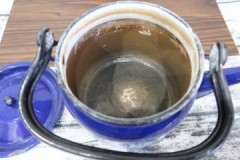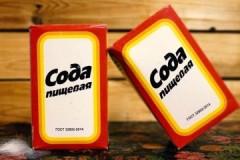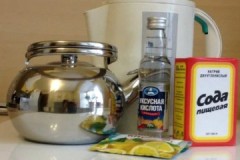Proven ways to descale an electric kettle at home
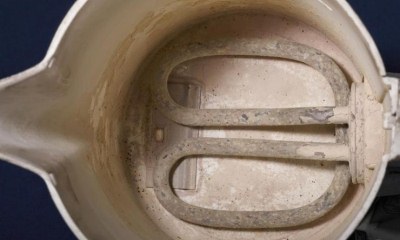 An electric kettle is a great helper in the kitchen. With it, you can boil water in a few minutes.
An electric kettle is a great helper in the kitchen. With it, you can boil water in a few minutes.
In order for the device to function properly, it must be properly looked after. First of all, this concerns the removal of limescale, which regularly forms on its walls.
Read about how to quickly and safely descale an electric kettle at home in the article.
Content
Folk recipes
You can deal with plaque in an electric kettle with the help of available tools. Comes to the rescue:
- citric and oxalic acid,
- soda,
- vinegar and even soda.
Read more about descaling your kettle. here.
How to remove with citric acid?
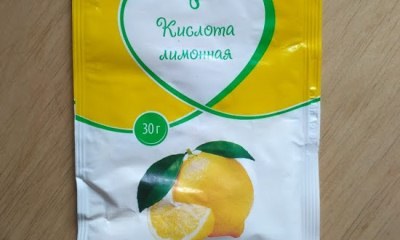 Citric acid gently and effectively removes lime deposits... To prepare the solution, 10 g of powder is taken for each liter of water. If the scale layer is thick, then the amount of preservative is increased to 20 g.
Citric acid gently and effectively removes lime deposits... To prepare the solution, 10 g of powder is taken for each liter of water. If the scale layer is thick, then the amount of preservative is increased to 20 g.
The contents of the sachet are poured into a kettle, filled with water and turned on. When the liquid is brought to a boil, the heating is stopped.
Let the agent take effect, drain it after about an hour... The kettle is washed, filled with new water, boiled, rinsed again, and then used as usual. Read more here.
Vinegar
Vinegar is as effective as citric acid. A preservative with a concentration of 9% is used to process the device. 1 liter of water will require 200 ml of vinegar.
The solution is poured into a kettle, boiled, left to cool completely and drained. If the layer was small, then it will be possible to cope with it on the first try. To get rid of old deposits, the procedure will need to be repeated 2-3 times. Additionally, you can clean the inside of the kettle with a soft sponge. More details can be found here.
How to clean with baking soda?
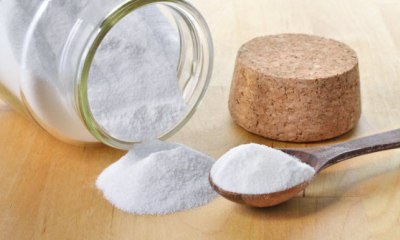 You can get rid of limescale with baking soda.This gentle remedy is not highly effective in combating old deposits, but with a small layer of scale it can do it.
You can get rid of limescale with baking soda.This gentle remedy is not highly effective in combating old deposits, but with a small layer of scale it can do it.
The procedure will require 1 liter of water and 5 tablespoons of soda... The solution is boiled, incubated for 2 hours and discarded. The walls of the kettle are rinsed with clean water. If necessary, use a foam sponge. Read more here.
Oxalic acid
Oxalic acid loosens deposits, facilitating their rapid dissolution. To remove limescale, it is better to use store concentrate rather than fresh sorrel. The herb is effective only for preventive purposes.
Mode of application:
- Fill the kettle with water so that it covers the entire lime layer.
- Add oxalic acid to the water. For 1 liter, it will take 10 - 15 g.
- Bring the solution to a boil.
- Switch off the device, let the cleaning agent cool down.
- Drain the composition, walk over the surface of the heating element and the walls with a soft sponge.
- Rinse the kettle, pour clean water into it, boil and drain.
How to quickly clean the walls with Coca-Cola, Sprite or Fanta?
Carbonated drinks such as Coca-Cola, Fanta and Sprite contain phosphoric acid. This substance well dissolves salt deposits, making them soft. Therefore, with the help of popular drinks, you can even cope with a thick layer of scale.
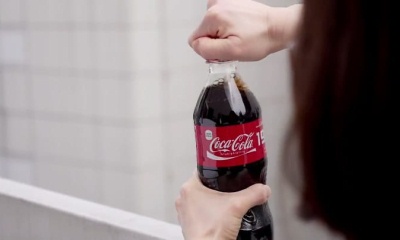 The procedure is carried out as follows:
The procedure is carried out as follows:
- pouring soda into a kettle;
- leave it open for 20 minutes to allow excess gas to escape;
- turn on the device, bring the liquid to a boil;
- when the solution has completely cooled down, it is drained;
- the kettle is rinsed with warm water.
Typically, carbonated drinks are so effective that the teapot shines with its original cleanliness after use. Reprocessing may be required only in the most advanced cases. More about the method - in this article.
Peelings from potatoes or apples
Apple and potato skins can help deal with salt deposits if they are just starting to form. This method is suitable for preventive cleaning and for those who are afraid to use caustic descaling agents.
Mode of application:
- Pour clean washed peel into a kettle.
- Pour it with water until it covers the scale layer.
- Bring the liquid to a boil 2-3 times.
- Leave to cool.
How can you remove plaque with cucumber or tomato pickle?
You can cope with lime deposits using pickle from canned cucumbers or tomatoes. It contains several active ingredients at once:
- vinegar,
- salt,
- acid secreted by vegetables.
Therefore, the tool is not inferior in effectiveness to lemon.
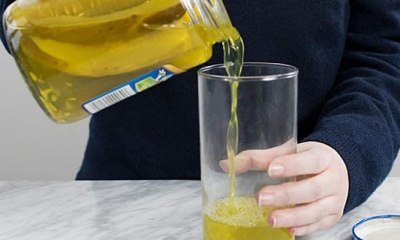 Mode of application:
Mode of application:
- pour the brine into the kettle;
- bring it to a boil;
- leave for 30 minutes and drain;
- rinse the kettle thoroughly with baking soda, boil it with clean water.
The main disadvantage of the brine is the specific smell that appears when heated. To prevent it from spreading throughout the apartment, the kitchen must be thoroughly ventilated.
Store funds
You can get rid of scale in the kettle with the help of professional cleaners. They are available for sale in retail stores and online markets. Popular and effective remedies:
- Topperr for descaling electric kettles. The amount of solution per 1 liter of water is 100-120 ml. Heating temperature - 50 degrees. The exposure time is 30 minutes. Price - 145 rubles for 250 ml.
- Top House descaler for kettles and coffee makers. The amount of solution per 1 liter of water is 150-200 ml. Heating temperature: bring to a boil. The exposure time is 30 minutes. Price - 275 rubles for 500 ml.
- Mellerud for quick descaling. The amount of solution for 250 ml of water is 60 ml. Heating temperature - until boiling. The exposure time is 15 minutes. Price - 500 rubles for 500 ml.
- Anti-scale: descaling agent. The amount of powder per 1.5 liters of water is 1 tablespoon. Heating temperature - until boiling. The exposure time is 20 minutes. Price for 100 g - 13 rubles.
- Cillit for descaling. The amount of solution for 500 ml of water is 100 ml. No heating required. The exposure time is 30 minutes. The price for 450 ml of solution is 195 rubles.
Features of cleaning electrical appliances from different materials
Depending on the material of which the kettle is made, the rules for cleaning it will differ.
Highlights:
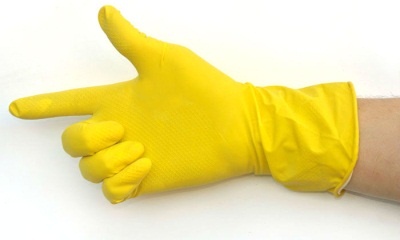 It is not recommended to use Coca-Cola or Fanta for plastic appliances. These drinks contain colorants, which can be absorbed into the walls when heated, which will not have the best effect on the appearance of the device.
It is not recommended to use Coca-Cola or Fanta for plastic appliances. These drinks contain colorants, which can be absorbed into the walls when heated, which will not have the best effect on the appearance of the device.- Kettles made of aluminum, copper, brass and galvanized metal are afraid of contact with acids. Therefore, it is better to use gentle products to clean them.
- Glass teapots are not recommended to be rubbed with a metal brush to avoid scratches.
- Metal devices are afraid of contact with sharp objects.
Prevention of limescale formation
So that the scale in the kettle forms slowly, you need to adhere to the following recommendations:
- use only soft water for boiling, you can pass it through a filter or fill in bottled liquid;
- do not leave water in the kettle overnight, pouring out its residues after the last use;
- do not boil water 2 times;
- rinse the device after each boil.
Helpful information
Remove limescale successfully the following tips will help:
 Do not use a hard metal brush or sharp objects to remove plaque. They can damage the walls of the device.
Do not use a hard metal brush or sharp objects to remove plaque. They can damage the walls of the device.- After finishing the treatment, it is not enough to simply rinse the kettle. You need to collect clean water into it, boil it and drain it. Only then can you safely use the device for its intended purpose.
- The exposure time of the cleaning agent must not be exceeded. This is especially important when using professional household chemicals.
Read about descaling methods in this section.
Related videos
3 effective ways to descale an electric kettle in the video:
Conclusion
The scale in the kettle quickly turns into a thick layer of limescale. You can cope with it with the help of improvised tools and professional household chemicals. The more difficult the case, the stronger the composition should be. If there is no desire to resort to aggressive products, cleaning should be carried out regularly.

